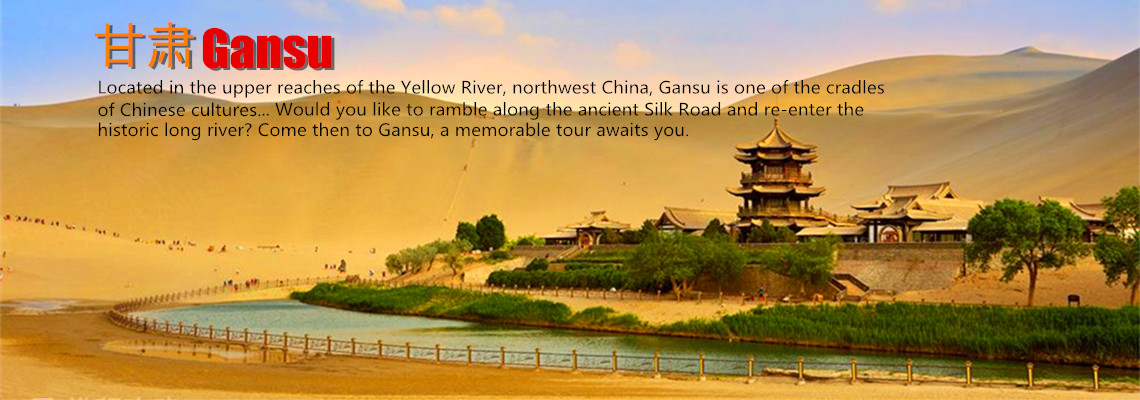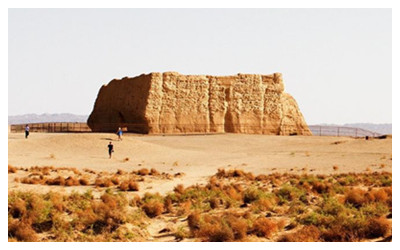
Yumenguan Pass
 Standing alone among the vast desert, Yumenguan Pass , also known as Small Square Castle, has lost its splendor as an invincible military fortress. You may hardly believe this dilapidated rammed-earth site was once a fierce battlefield and prosperous trading gateway with merchants and camels streaming in and out. Stood along the northern branch of the Silk Road, the oldest international trading route of the world, Hetian jade of Yutian (today's Hetian County, Xinjiang) was transported into the central plain through the pass in old times, hence the name Yumenguan (Jade Gate Pass).
Standing alone among the vast desert, Yumenguan Pass , also known as Small Square Castle, has lost its splendor as an invincible military fortress. You may hardly believe this dilapidated rammed-earth site was once a fierce battlefield and prosperous trading gateway with merchants and camels streaming in and out. Stood along the northern branch of the Silk Road, the oldest international trading route of the world, Hetian jade of Yutian (today's Hetian County, Xinjiang) was transported into the central plain through the pass in old times, hence the name Yumenguan (Jade Gate Pass).What to see?
Yumenguan Pass was a crucial pass along the western border built in theHan Dynasty (206 BC – 220 AD), located at the west end of Hexi Corridor, the gateway to the western regions from central China. The pass was built from rammed yellow earth and has two gates, the west gate and the north gate, with the latter one being the main entrance. There used to be several offices inside and a staircase at the southeast corner leading to the top. However, these sites cannot be traced at present because of thousands of years of disrepair.
Guarding the Western Frontier
In the early Han Dynasty, the western border of the country was ceaselessly invaded by Huns. Instead of fighting back, the weak state rulers preferred to marry imperial daughters to Huns' leaders to get temporary peace. When Emperor Wu rose to power, this cowardly policy was immediately abolished. He launched fierce counterattacks on a large scale, and drove Hun's troops out of the territory. In order to strengthen the stability of the western frontier, two passes, Yumenguan and Yangguan were set up along the border. From then on, these two passes, like two royal soldiers, honorably guarded the western gate for their motherland.
 Gateway of the Silk Road
Gateway of the Silk Road
Located along the northern branch of the Silk Road, Yumen Pass also served as a post station for businessmen and ambassadors. It has witnessed the prosperity of business trade along the old trading route. Silk, porcelain, and tea was transported to the western regions in an endless stream. Specialties of the west countries such as spice, fruit, music, and religious beliefs were introduced to central plain at the same time. It is said that the grapes, pomegranates, and walnuts now growing in central China were originally from the western area. Two thousand years later, the singing of camel bells have disappeared. The cry of sellers in the markets is completely gone. Only an isolated castle remains there to remind you of its glorious past.
Travel Tips
Add: Located in the desert 80 km west of Dunhuang City, Gansu Province,
Opening Hours: 08:00-17:00
Entrance Fee: CNY 40
Tel: 0937-8821984



 Ask Questions ?
Ask Questions ?